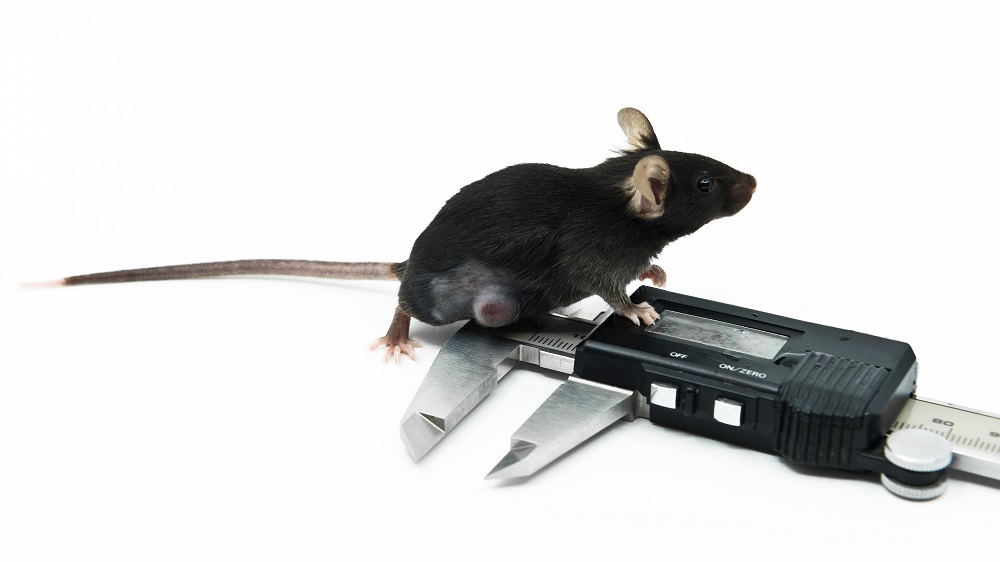In Aging, researchers have published negative results on the long-term use of methylene blue and mitoquinone (MitoQ), two popular antioxidants, to sustain bone health in mice.
Oxidative stress and bone health
Previous work has found that oxidative stress, which is commonly associated with age-related disease and damage, is related to bone diseases. Substantial amounts of work have been done on this connection [1], and antioxidants have been found to sustain function in bone cells derived from rats [2]. A human study had found an inverse correlation between antioxidant consumption and osteoporosis [3].
Therefore, these researchers chose two well-known antioxidants for a long-term mouse study. The first, methylene blue, has been in the clinic for over a hundred years. This molecule readily enters cells and mitochondria, where it has been discovered to react to sunlight [4]. Multiple experiments have found that it has positive effects against age-related conditions. For example, one experiment found that it lengthens the average lifespan of female mice in a genetically heterogenous population [5], and another found that it stops osteoarthritis from progressing in rats [6].
While MitoQ, a commonly taken supplement, has not been found to extend lifespan in heterogenous mice [5], previous work has found that it helps bone health in a mouse model of diabetes and in mice given a diet high in fat [7]. Another study found it to be effective against advanced glycation end-products (AGEs) [8] and in a mouse model of bone loss caused by tooth decay [9].
Cellular effects, but not in living animals
This study began with administering methylene blue and MitoQ to mesenchymal stem cells (MSCs) and osteoblasts, which are responsible for constructing bone. While these compounds were found to have mitochondrial effects in these cells, there was no change in total cellular respiration. These compounds also discouraged stem cells from differentiating into osteoclasts, which are responsible for removing bone.
The researchers administered methylene blue to female Black 6 mice for 6 or 12 months, analyzing them at 18, 24, and 30 months of age. Unfortunately, there were no differences between the treated mice and the control group. The same amount of osteoporosis, age-related bone loss, had occurred in all of these mice relative to another population of 5-month-old female mice. It was also found to have no effect on the age-related loss of muscle strength known as sarcopenia; the mice became progressively weaker with age regardless of whether or not they had taken methylene blue.
The researchers then partnered with the well-known Interventions Testing Program to determine if either methylene blue or MitoQ has effects on the bones of genetically heterogenous mice, administering 28 parts per million of methylene blue from 7 to 22 months or 100 parts per million of MitoQ for 4 to 22 months. Despite this long-term treatment, the results were entirely negative: no effects on bone morphology were found in either male or female mice.
Antioxidants have been well-documented as having multiple health benefits, and it was reasonable to believe that they might have had some benefit in this case. However, this study serves as proof that they are not a panacea and that, according to the researchers, “targeting whole body redox balance via systemic application of MB or MitoQ may not be an effective way to prevent age-related bone loss.” They instead suggest that exercise and related interventions may be better ways to manage this potentially debilitating condition.
Literature
[1] Marcucci, G., Domazetovic, V., Nediani, C., Ruzzolini, J., Favre, C., & Brandi, M. L. (2023). Oxidative stress and natural antioxidants in osteoporosis: Novel preventive and therapeutic approaches. Antioxidants, 12(2), 373.
[2] Ueno, T., Yamada, M., Igarashi, Y., & Ogawa, T. (2011). N‐acetyl cysteine protects osteoblastic function from oxidative stress. Journal of Biomedical Materials Research Part A, 99(4), 523-531.
[3] Sendur, O. F., Turan, Y., Tastaban, E., & Serter, M. (2009). Antioxidant status in patients with osteoporosis: a controlled study. Joint bone spine, 76(5), 514-518.
[4] Klosowski, E. M., de Souza, B. T. L., Mito, M. S., Constantin, R. P., Mantovanelli, G. C., Mewes, J. M., … & Constantin, R. P. (2020). The photodynamic and direct actions of methylene blue on mitochondrial energy metabolism: A balance of the useful and harmful effects of this photosensitizer. Free Radical Biology and Medicine, 153, 34-53.
[5] Harrison, D. E., Strong, R., Allison, D. B., Ames, B. N., Astle, C. M., Atamna, H., … & Miller, R. A. (2014). Acarbose, 17‐α‐estradiol, and nordihydroguaiaretic acid extend mouse lifespan preferentially in males. Aging cell, 13(2), 273-282.
[6] Li, J. W., Wang, R. L., Xu, J., Sun, K. Y., Jiang, H. M., Sun, Z. Y., … & Shi, D. Q. (2022). Methylene blue prevents osteoarthritis progression and relieves pain in rats via upregulation of Nrf2/PRDX1. Acta Pharmacologica Sinica, 43(2), 417-428.
[7] Li, J., He, W., Liao, B., & Yang, J. (2015). FFA-ROS-P53-mediated mitochondrial apoptosis contributes to reduction of osteoblastogenesis and bone mass in type 2 diabetes mellitus. Scientific reports, 5(1), 12724.
[8] Mao, Y. X., Cai, W. J., Sun, X. Y., Dai, P. P., Li, X. M., Wang, Q., … & Huang, S. B. (2018). RAGE-dependent mitochondria pathway: a novel target of silibinin against apoptosis of osteoblastic cells induced by advanced glycation end products. Cell death & disease, 9(6), 674.
[9] Li, X., Zhao, Y., Peng, H., Gu, D., Liu, C., Ren, S., & Miao, L. (2022). Robust intervention for oxidative stress-induced injury in periodontitis via controllably released nanoparticles that regulate the ROS-PINK1-Parkin pathway. Frontiers in Bioengineering and Biotechnology, 10, 1081977.








